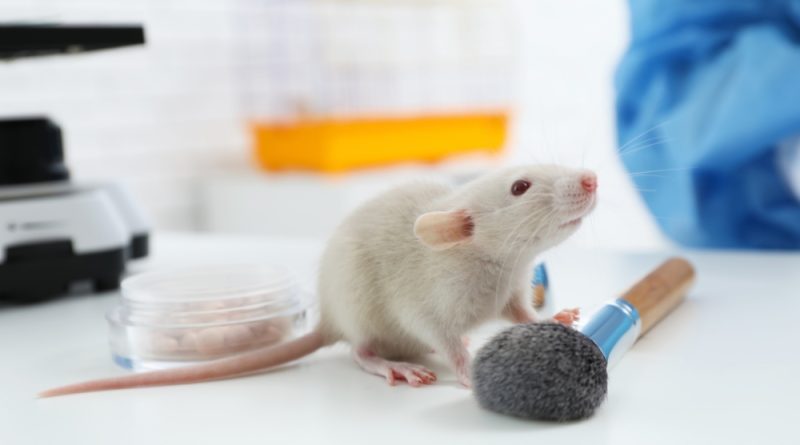Laboratory Animals – The Contribution to Science
From cosmetics to medicine
Rodents have frequently been used as laboratory animals for scientific research and medical experiments for decades. Their rapid reproductive properties, low cost, ease of maintenance, and physiological similarity to humans make them valuable models for studying a variety of diseases and medical conditions. In this article, we examine the significant contributions that rodents have made to science and medicine, their use in research, and the ethical aspects of their use.
History of rodent use in scientific research:
In the early 20th century, with the development of genetics and molecular biology, the application of rodents as experimental animals began to receive attention. Scientists like Thomas Hunt Morgan and Hermann Joseph Müller used the fruit fly (Drosophila melanogaster) to study heredity and genetic mutation. Later, the use of mice and rats became more common due to their availability, ease of maintenance, and accelerated reproductive capacity.
Disease models and pharmacological studies:
Rodents are widely used as models for human diseases to study underlying mechanisms and develop effective treatments. For example, genetically modified mice are essential for understanding diseases such as cancer, cardiovascular diseases, diabetes, Alzheimer’s, and Parkinson’s. These models allow researchers to study the impact of specific genes and therapeutic targets on different diseases.
Furthermore, rodents are used to test the efficacy and safety of drugs and therapies. Pharmacological studies in rodents help identify potentially promising compounds and optimize treatment regimens before entering clinical trials in humans.
Neuroscience research:
Rodents are especially important in neuroscience research because their nervous systems are similar to humans. Mice and rats are used to study brain plasticity, learning, memory, behavior, and other brain functions. Additionally, these animals contribute to the understanding of neurological diseases such as multiple sclerosis, epilepsy, and schizophrenia.
Immunology and infection research:
Rodents have played a crucial role in advancing the study of the immune system and the body’s response to infection. They help researchers understand innate and adaptive immunity and responses to specific pathogens. This research is fundamental to the development of vaccines and treatments for many infectious diseases.
Contributions to regenerative medicine:
Regenerative medicine concerns the development of therapies based on the regeneration of damaged tissues and organs. Rodents play a crucial role in this field, especially in research involving stem cells and tissue engineering. Studies in mice and rats help identify regeneration mechanisms and test new treatments.
Ethical aspects of using rodents as laboratory animals:
The use of rodents as laboratory animals is a controversial topic, and the ethical issues surrounding the practice are often contentious. The scientific community is increasingly aware of the importance of following strict ethical guidelines to ensure the well-being of these animals. The use of rodents in research is regulated by an ethics committee that seeks a balance between scientific interests and the respect and care for animals.
Alternatives to rodent use:
Due to ethical and scientific concerns, researchers and institutions are constantly seeking alternatives to the use of rodents in research. This includes developing disease models based on cell cultures, human tissues, and computational models. Additionally, in vitro methods and less complex animal tests are used to investigate specific issues without the use of rodents.
Regulation and control:
The use of laboratory animals, including rodents, is strictly regulated by laws and regulations in many countries. Researchers must obtain prior approval from an ethics committee to conduct research involving animals and must follow specific guidelines to ensure the welfare of animals and the validity of results.
Future progress:
The role of rodents in scientific research is likely to continue evolving as science advances and new technologies become available. More complex models, such as genetically modified mice with specific human characteristics, may provide more relevant information for medicine and science. Additionally, the ongoing development of alternative research methods, such as organ-on-a-chip models and human cell cultures, may help reduce reliance on live animals in the laboratory.
Growing awareness of animal welfare may also lead to changes in how rodents are used in research. An increasing number of researchers are seeking to improve the living conditions of laboratory animals by providing an enriched environment, reducing stress, and adopting more humane care practices.
Furthermore, research techniques in the biological and medical sciences are becoming more advanced, allowing for more precise and specific studies that require fewer animals to achieve significant results.
Ethically, dialogue between scientists, animal rights advocates, and society at large is crucial to finding a balance between the importance of scientific research and the respect for the animals involved. Transparency about research practices and the disclosure of results are also essential to ensure public trust and understanding of the purpose and benefits of such research.
Moreover, investment in education and awareness about the importance of scientific research and the ethical use of laboratory animals can help garner more social support and understanding for these practices.
Conclusion:
In summary, on the topic “Laboratory Animals – The Contribution to Science,” the use of rodents as laboratory animals is fundamental to the advancement of science and medicine, providing valuable insights into diseases, biological mechanisms, and potential therapies. However, animal research must also be conducted responsibly and ethically, ensuring the well-being of animals and respecting their needs and dignity.
While science is constantly evolving, it is essential to remember that animal research still plays a significant role in current scientific advancements. It is imperative to continue improving research methods and techniques, seeking alternatives whenever possible, and ensuring that animal research is conducted with the utmost respect for ethical and animal welfare considerations.
In the future, technological advancements and increasing awareness of animal




